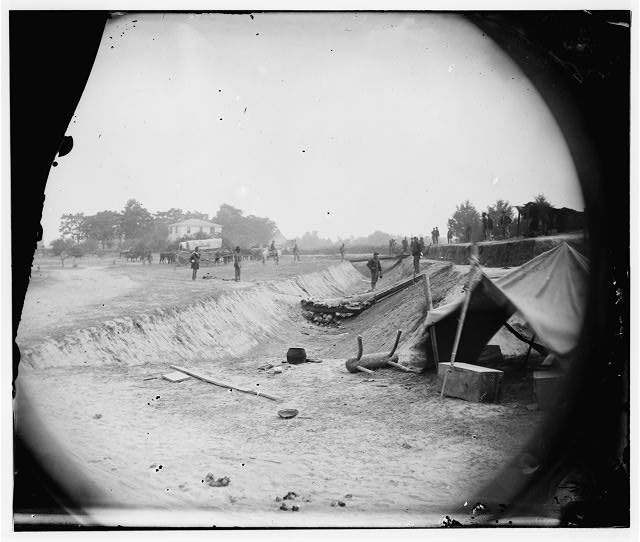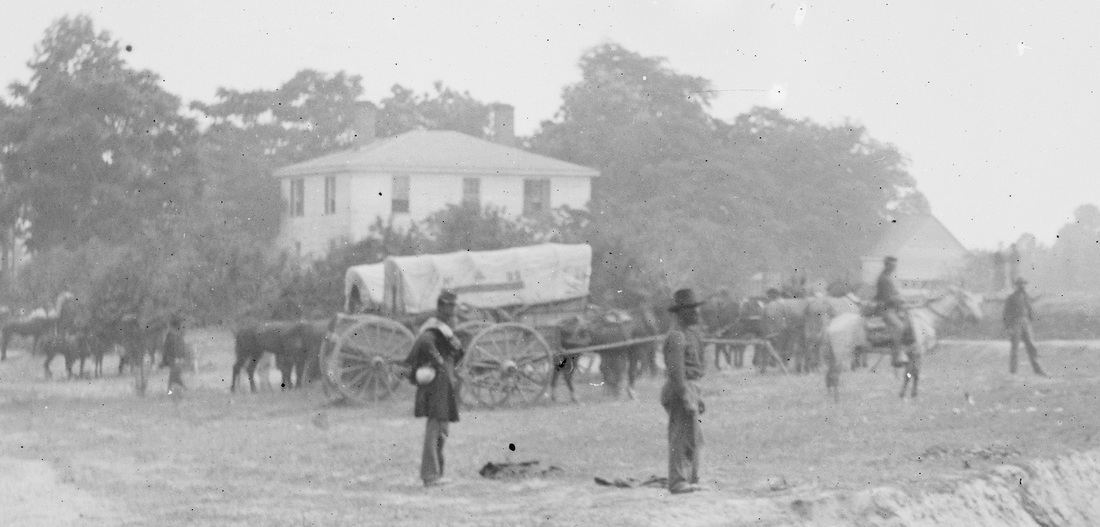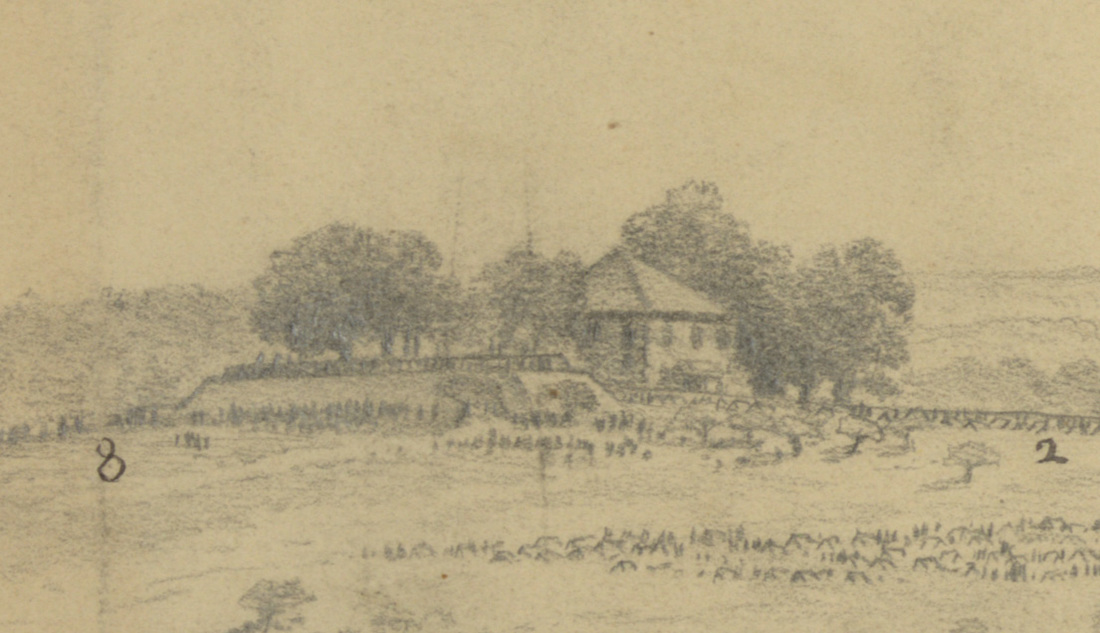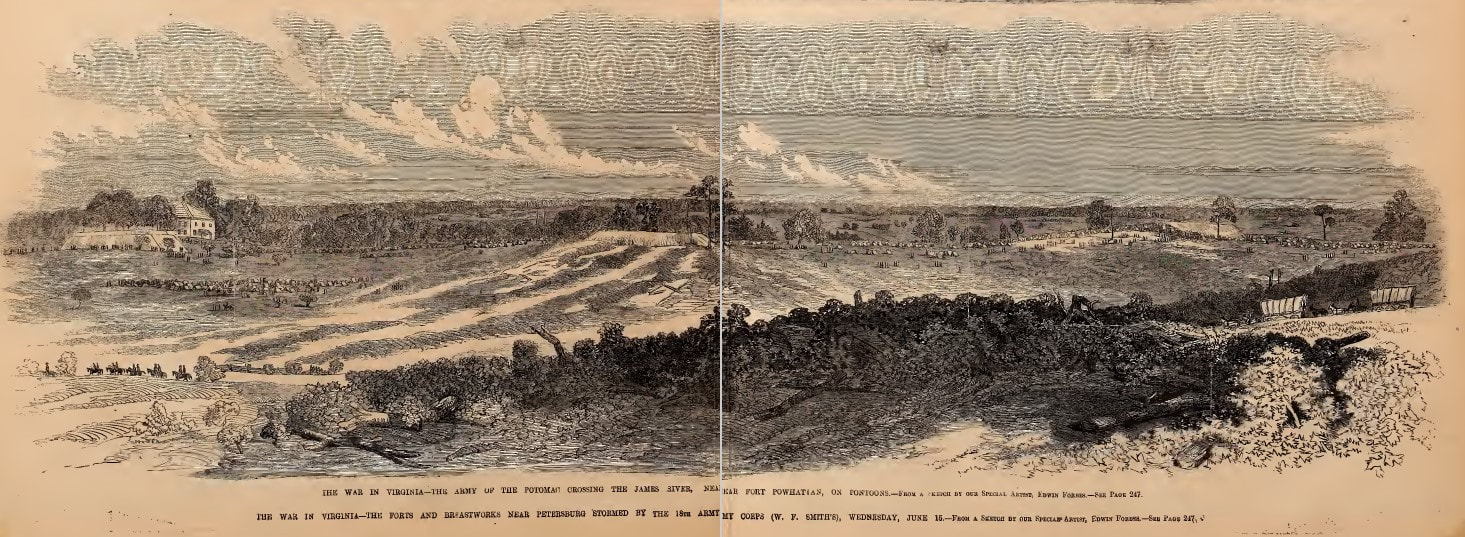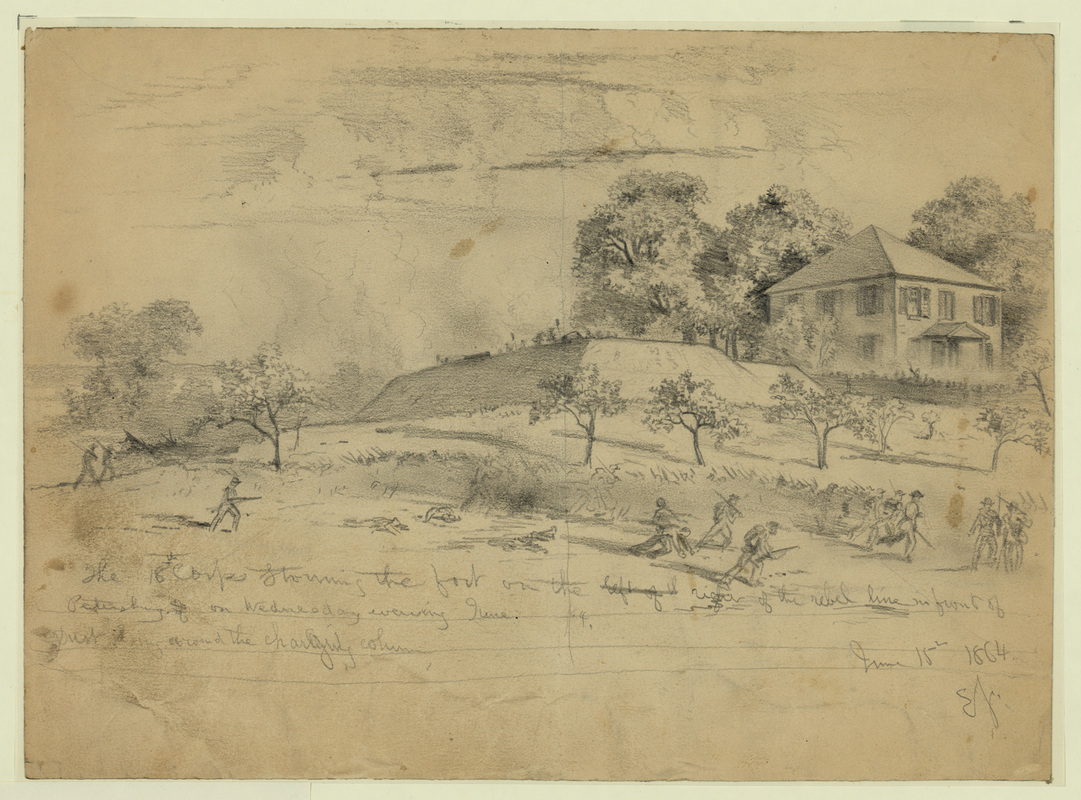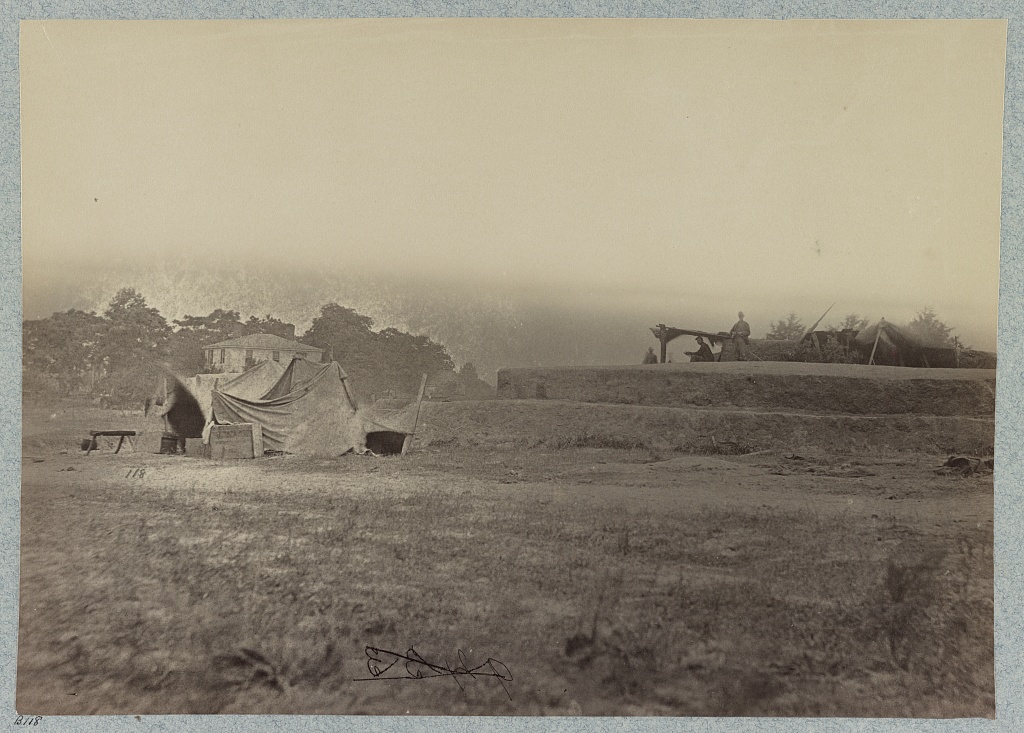The Dunn House
"The Dunn house remains an enigmatic feature of the landscape from the standpoint of historical documentation. The Dunn house was located south of the junction of the Prince George Court House and Jordan's Point roads, near Dimmock Battery 11. ... However, James A. Dunn appears in both the 1860 Virginia personal property tax and the 1860 U.S. Census. The personal property tax indicates that Dunn owned 9 adult slaves. The Census data (U.S. Census, PG Co., p. 67) record that Dunn resided in dwelling no. 555 as a farmer with real estate valued at $8000 but no personal estate. " Exotic yucca plants grow on the site today, but no physical trace of the house is visible. From: An Archaeological Overview and Assessment of the Main Unit, Petersburg National Battlefield, Virginia, National Park Service, 2001.
..."it is unclear if the Dunn residence survived the Civil War. However, there are two indications that it may not have. First, in the 1870 census James and Sarah Dunn were living in the 6th Ward, 1st District of Petersburg. He was a book keeper.[i] The 1880 census shows that the Dunns remained in Petersburg, then in the third ward of the city.[ii] The other shred of evidence of the house’s possible Civil War destruction is that it is not shown on the 1894 USGS map." From James A. Dunn House. Emmanuel Dabney, National Park Service, 2009.
[i] 1870 U.S. Census, Dinwiddie County, Virginia, 381.
[ii] 1880 U.S. Census, Dinwiddie County, Virginia, 326.
..."it is unclear if the Dunn residence survived the Civil War. However, there are two indications that it may not have. First, in the 1870 census James and Sarah Dunn were living in the 6th Ward, 1st District of Petersburg. He was a book keeper.[i] The 1880 census shows that the Dunns remained in Petersburg, then in the third ward of the city.[ii] The other shred of evidence of the house’s possible Civil War destruction is that it is not shown on the 1894 USGS map." From James A. Dunn House. Emmanuel Dabney, National Park Service, 2009.
[i] 1870 U.S. Census, Dinwiddie County, Virginia, 381.
[ii] 1880 U.S. Census, Dinwiddie County, Virginia, 326.

